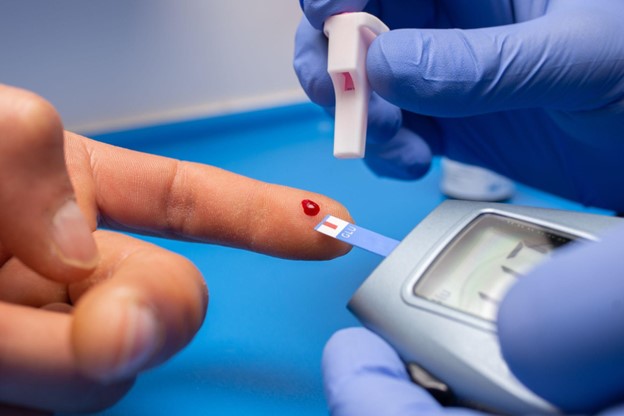For people with diabetes, controlling their blood sugar levels is important, and getting accurate readings is important for staying healthy. Unfortunately, many people make mistakes when testing their blood sugar, which can lead to misleading results and poor decision-making. In this blog post, we’ll discuss the How to Test Blood Sugar Accurately, common errors to avoid, and how to ensure accurate results every time.
What is the most precise method for measuring blood sugar?
The most accurate method for testing blood sugar is through fingerstick blood glucose meters that test blood obtained from a small sample on your fingertip. These devices are FDA-approved and widely recommended by healthcare providers. When used correctly, modern meters are quite accurate and provide accurate readings. Continuous glucose monitoring (CGM), in which a small sensor is inserted beneath the skin to continuously monitor glucose levels, is another highly accurate method. While CGMs provide more data, fingerstick testing remains the standard for many people.

What is the Correct Way to Test Blood Sugar?
Here’s the correct procedure for How to Test Blood Sugar Accurately with a glucose meter:
Wash Your Hands: Wash your hands thoroughly with soap and water to prevent food or dirt from contaminating them and impairing your reading. Dry them well before proceeding.
Prepare the Meter and Test Strips: Insert a new test strip into your blood glucose meter. Make sure it’s compatible with your meter.
Prick Your Finger: Prick the side of your fingertip with a lancing instrument. Avoid the center of your finger to reduce pain and to get a cleaner sample.
Apply the Blood Sample: To produce a small drop of blood, gently squeeze your finger. Apply this drop to the test strip.
Wait for the Results: Your glucose meter will process the sample and show your blood sugar reading. Typically, results appear within a few seconds.
Record the Reading: It’s essential to keep track of your blood sugar levels to share with your healthcare provider and make necessary adjustments.
How Do You Know if Your Blood Sugar is Wrong?
Several signs may indicate that your blood sugar test is inaccurate:
Pain or Bruising: Your lancet device may be too harsh or you may be pricking the wrong part of your finger if you consistently experience pain or bruising after testing.
Erratic Readings: Large fluctuations between tests, especially when there hasn’t been a significant change in diet or activity, can indicate an inaccurate reading.
Leaking Blood or Blood Clotting: If your blood sample isn’t sufficient or the test strip is defective, the reading might be wrong.
Meter Calibration Issues: If your meter isn’t calibrated properly, it could give you inaccurate results. Always use fresh test strips and make sure your meter is well-maintained.
Which Sugar Test Method Is Best?
The best method for testing blood sugar depends on your needs:
For the majority of people, the fingerstick test is the most common and reliable method. It yields quick results and is simple to perform at home.
Continuous Glucose Monitoring (CGM): If you need more detailed insights into how your blood sugar levels change throughout the day, a CGM might be the best option. It is especially helpful for people who have type 1 diabetes or need to be constantly monitored.
Hemoglobin A1c Test: This test, done at a doctor’s office, measures your average blood sugar levels over the past 2-3 months. It’s not useful for daily monitoring but is important for understanding overall control of blood sugar levels.
Can Blood Sugar Tests Be Wrong?
Yes, inaccurate blood sugar tests do occur. Some common causes of inaccurate results include:
Poor technique: Inaccurate results can result from not washing your hands before testing, using test strips that have expired, or not following the meter’s instructions.
Environmental Factors: Readings can be inaccurate due to extreme temperatures, high humidity, or even dirty test strips.
Meter Malfunctions: Meters can sometimes malfunction, particularly if the battery is low, the strips are defective, or the device isn’t calibrated properly.
Incorrect Sample Size: If the blood sample is too small or not placed on the test strip correctly, the result might not be accurate.
Conclusion:-
Testing blood sugar accurately is essential for managing diabetes effectively. By following the proper technique and using the correct equipment, you can ensure that your readings are reliable. Remember to always wash your hands, use fresh test strips, and follow the manufacturer’s instructions for your glucose meter. Don’t be afraid to ask your healthcare provider for advice if you’re unsure about your testing method or equipment.